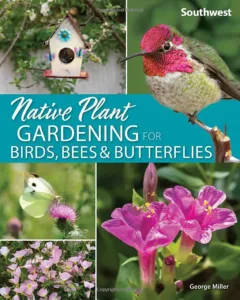
Please join us for our June Chapter meeting with our guest speaker George Miller.

A lot has changed since fossil records indicate that clumsy beetles began spreading pollen as they ate their way from one flower to another. After 150 million years, the dynamics of pollination are still a work in progress. By offering nectar for energy and pollen for protein, flowers have developed intricate systems to manipulate insect behavior. This is usually a straightforward exchange of food for services, but many flowers save energy by cheating. They use deception, false advertising, bait and switch, and even deadly tricks to entice insects into their perfumed boudoirs. And it all happens in your backyard if you plant a native plant pollinator garden.
Longtime environmental photojournalist, writer, and botanist, George Miller received a Masters in botany and zoology from the University of Texas, Austin. As a journalist he specializes in conservation issues, outdoor recreation and native plant subjects and has published in Texas Highways, Texas Parks and Wildlife Magazine, and New Mexico Magazine. His Apple eBook Wildflowers of Texas covers 700 species with more than 1,000 photographs. His book, “Landscaping with Native Plants of Texas,” one of a three part series including the Southwest and Southern California, won the Texas Library Roundtable Award in 2008 for Best Reference Book. Recent publications include “A Quick Guide to Wildflowers of Texas,” “Native Plant Gardening for Birds, Bees and Butterflies: Southwest,” and a child oriented guide, “Backyard Science and Discovery Workbook: Southwest.” George first joined the Native Plant Society of Texas in the 1980s, and currently is a long-distance member of the Austin chapter. He is a lifetime member of the Native Plant Society of New Mexico. His website www.WildflowersNM.com has descriptions, photos and identification tips for over 650 New Mexico and Southwest wildflowers.
This event is open to the public. The meeting site will open for socializing at 6:30 p.m. The presentation will begin at 7:00, followed by announcements. If you are interested in becoming more involved in the chapter, please stick around for the business meeting so you can meet chapter leaders.
How to join the Zoom meeting